Igongo Cultural Centre Menu (Ushs Lunch Menu)













Other than what is on offer on the Igongo Cultural Centre menu, there is usually a lunch buffet served at Kaahwa Kanuzire, in the lower gardens at the Centre.
I had the pleasure of eating from this buffet recently, and I can confirm that it has a good variety of dishes that are delicious!
The price for the buffet is Ushs. 35,000/- per person, so if you compare that with the price of many of the items on the Igongo Cultural Centre menu, you see that the buffet is a good value-for-money choice.
Table of Contents
Molecule Lounge and Restaurant Kololo Photos

READ ALSO: Bens Burgers
Emirates Grill Kampala Menu Price List
Sula Birungo Menu Prices/Sula Birungo Chicken Menu/Sula Birungo Menu and Prices

READ ALSO: 5 Important Possible Side Effects of Diuretics
READ ALSO: 4 Easy, Cool Teenagers Hairstyles
Molecule Kololo Menu/Molecule Lounge and Restaurant Kololo Menu

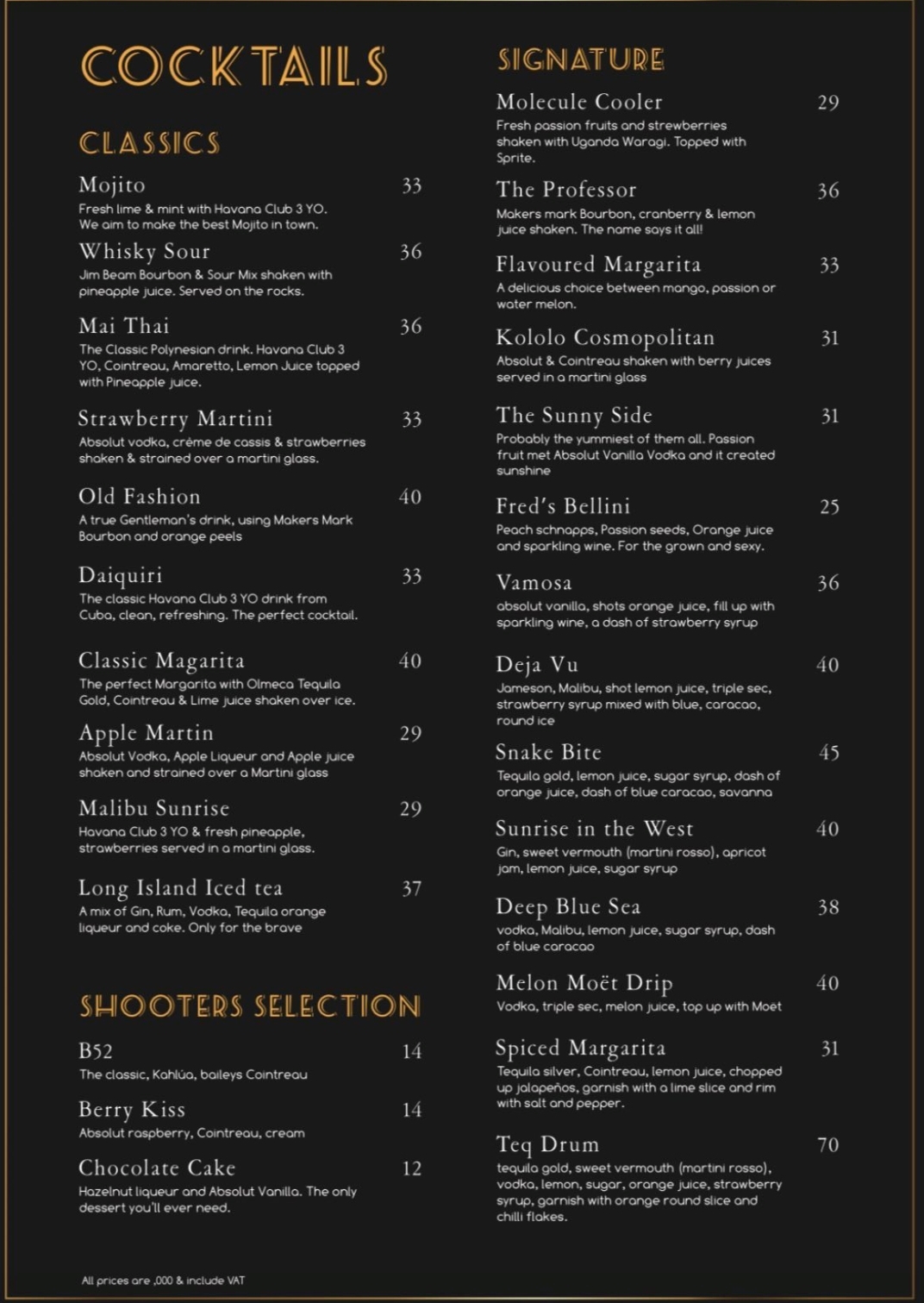
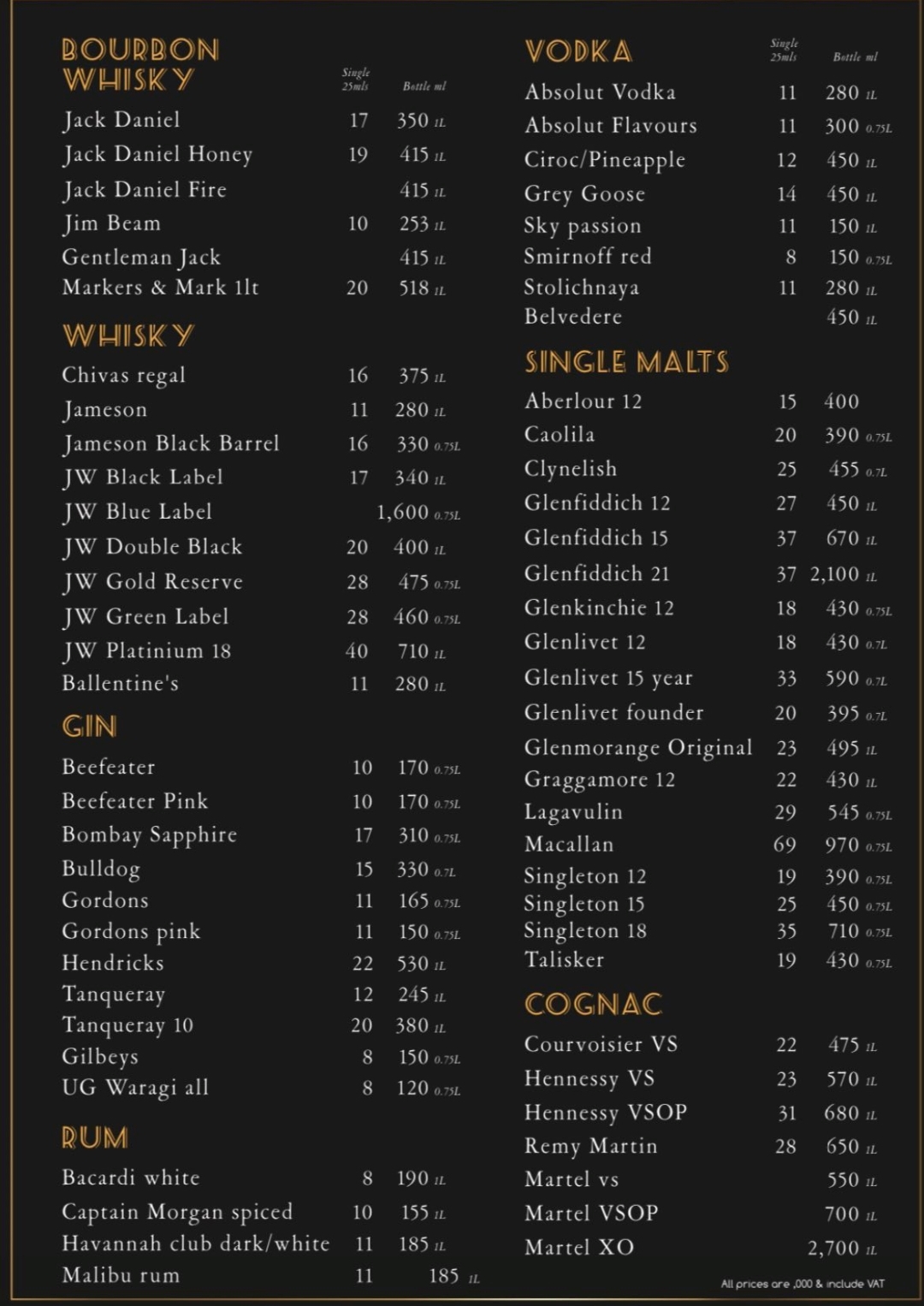
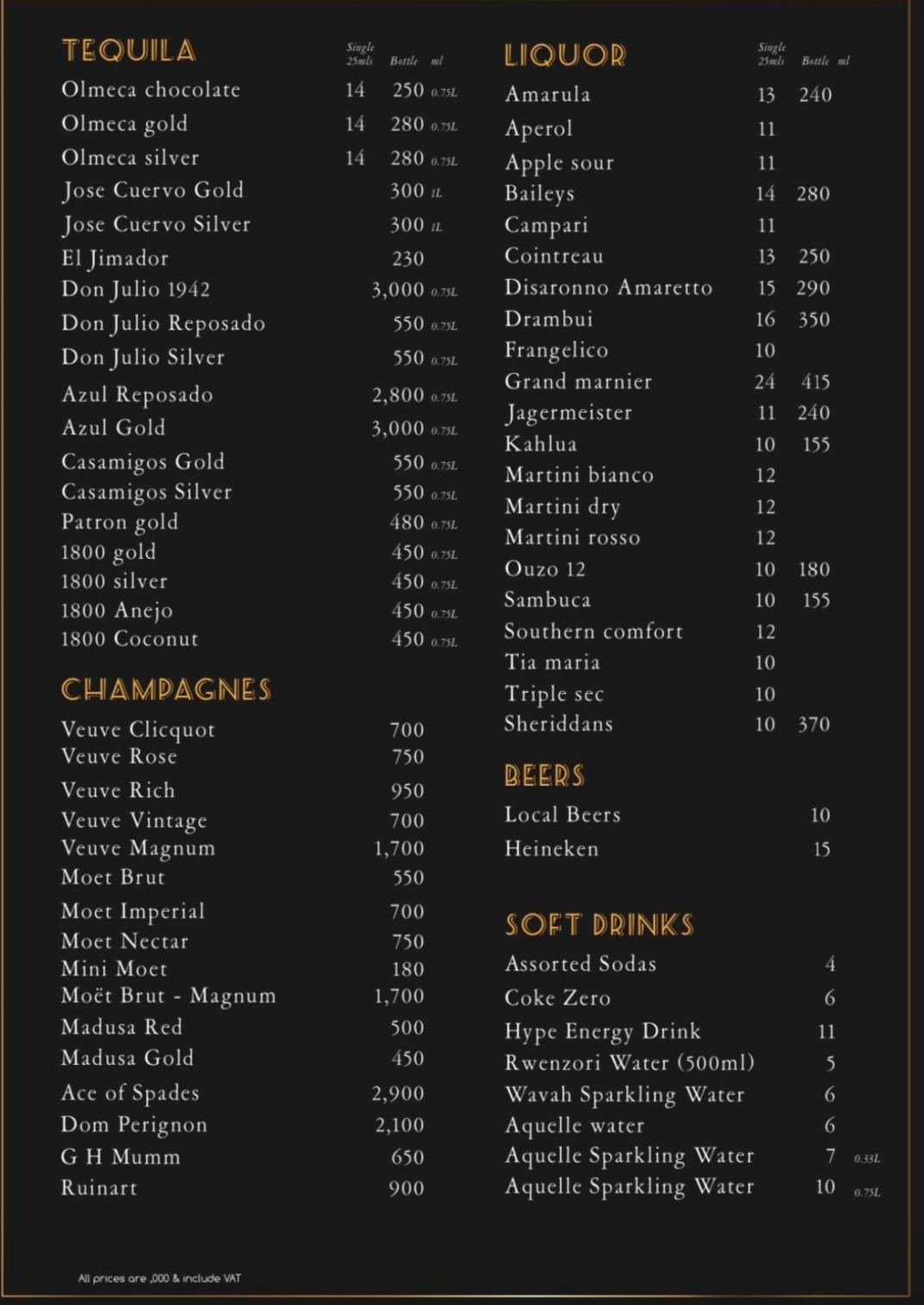

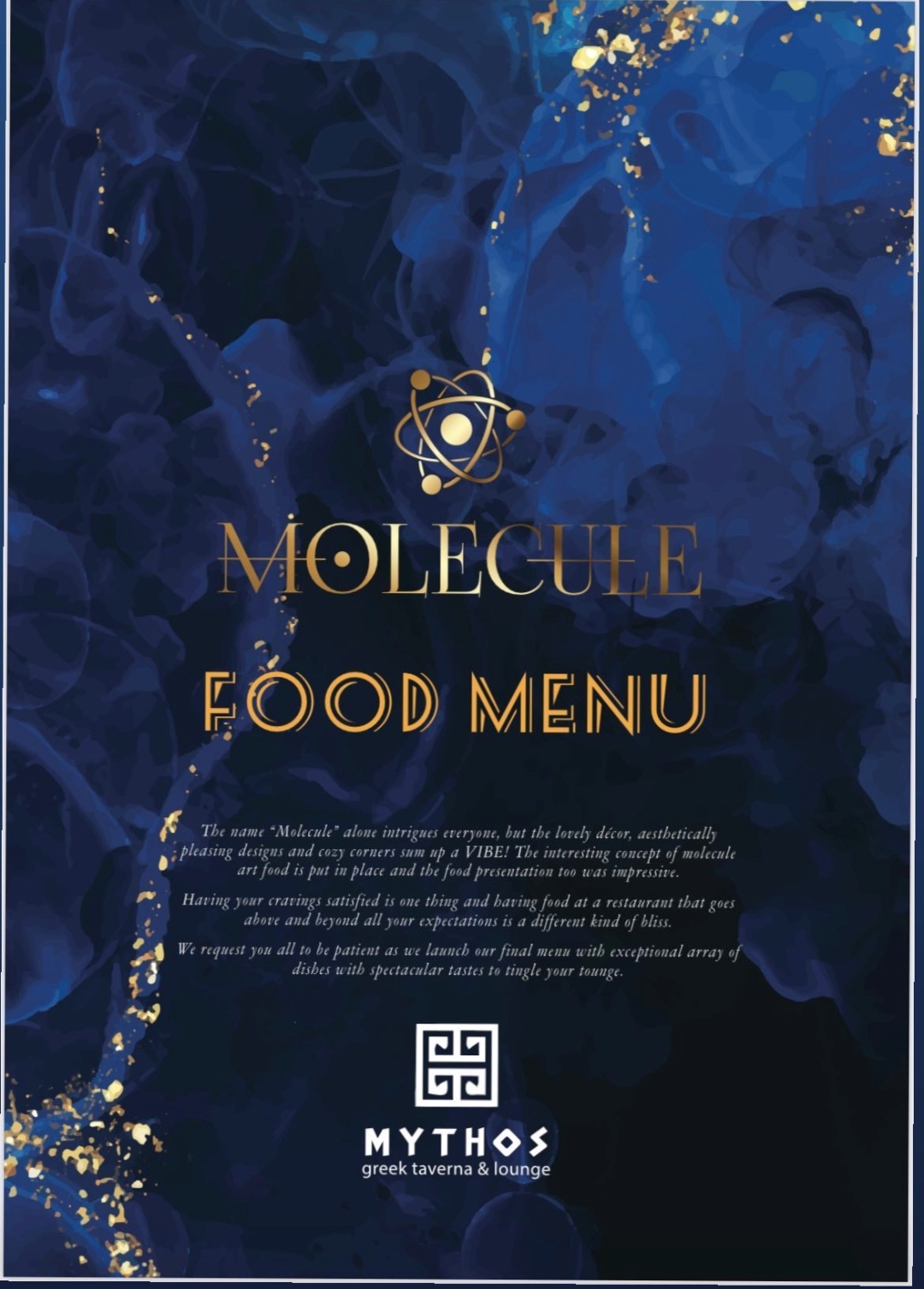

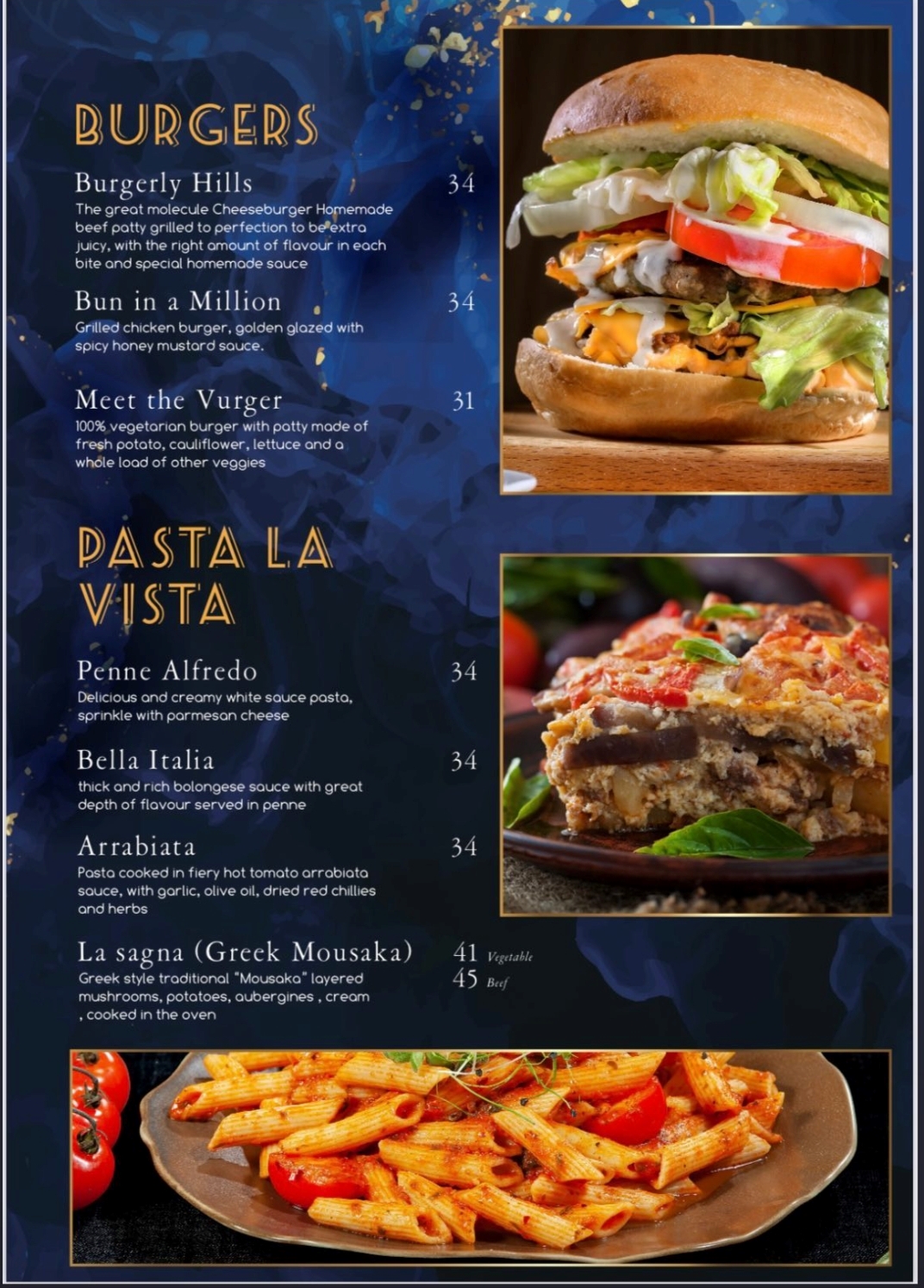
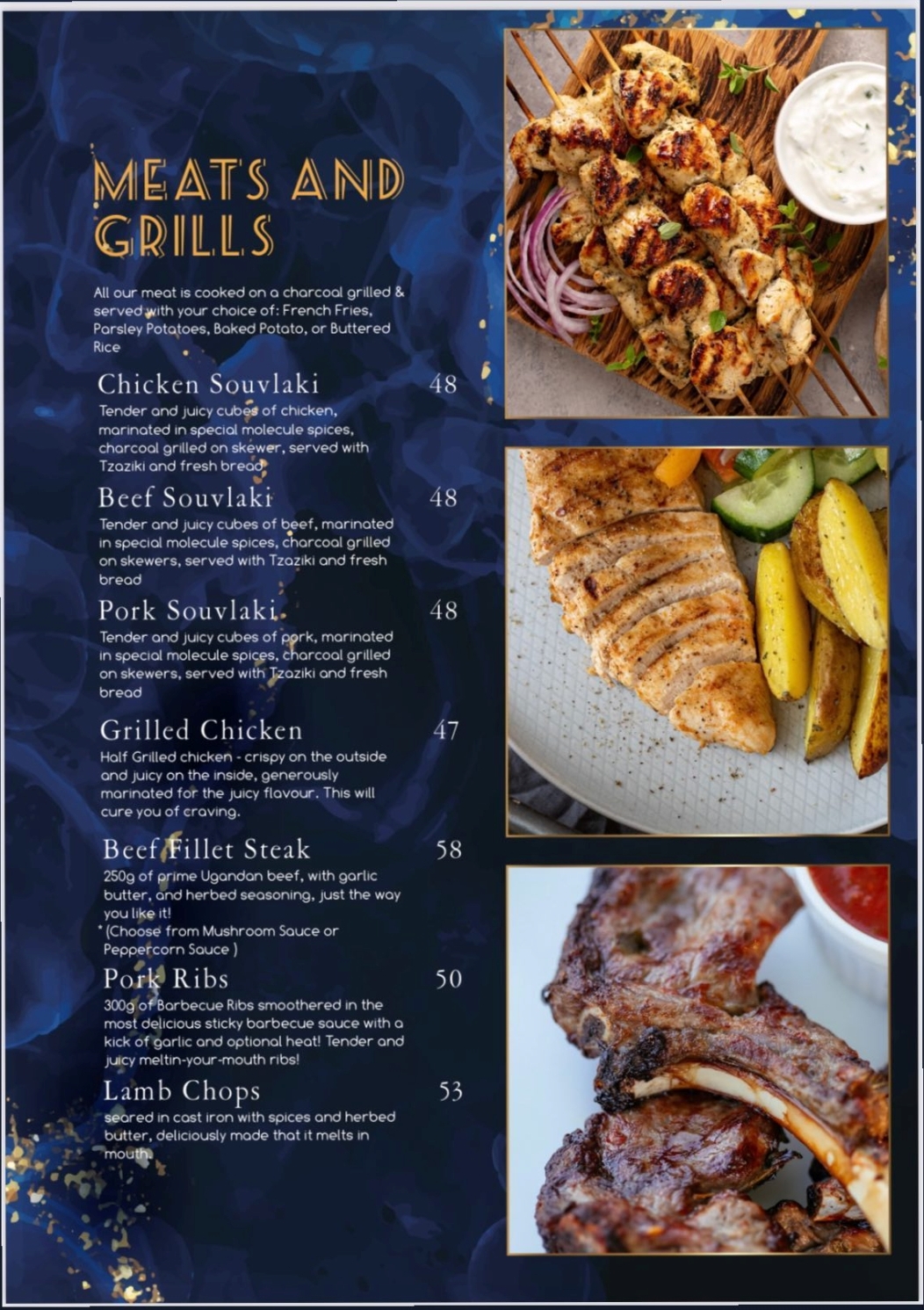
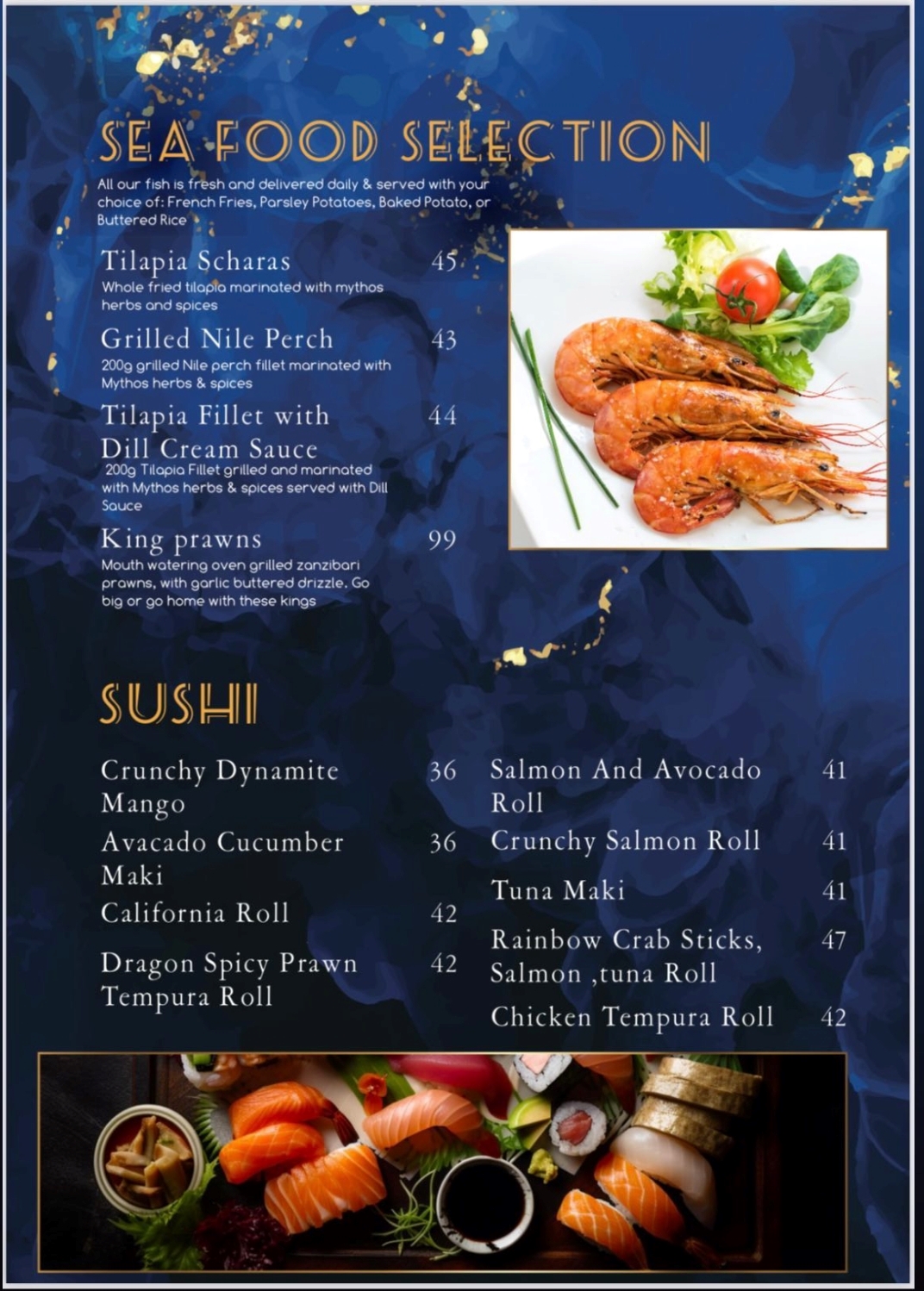
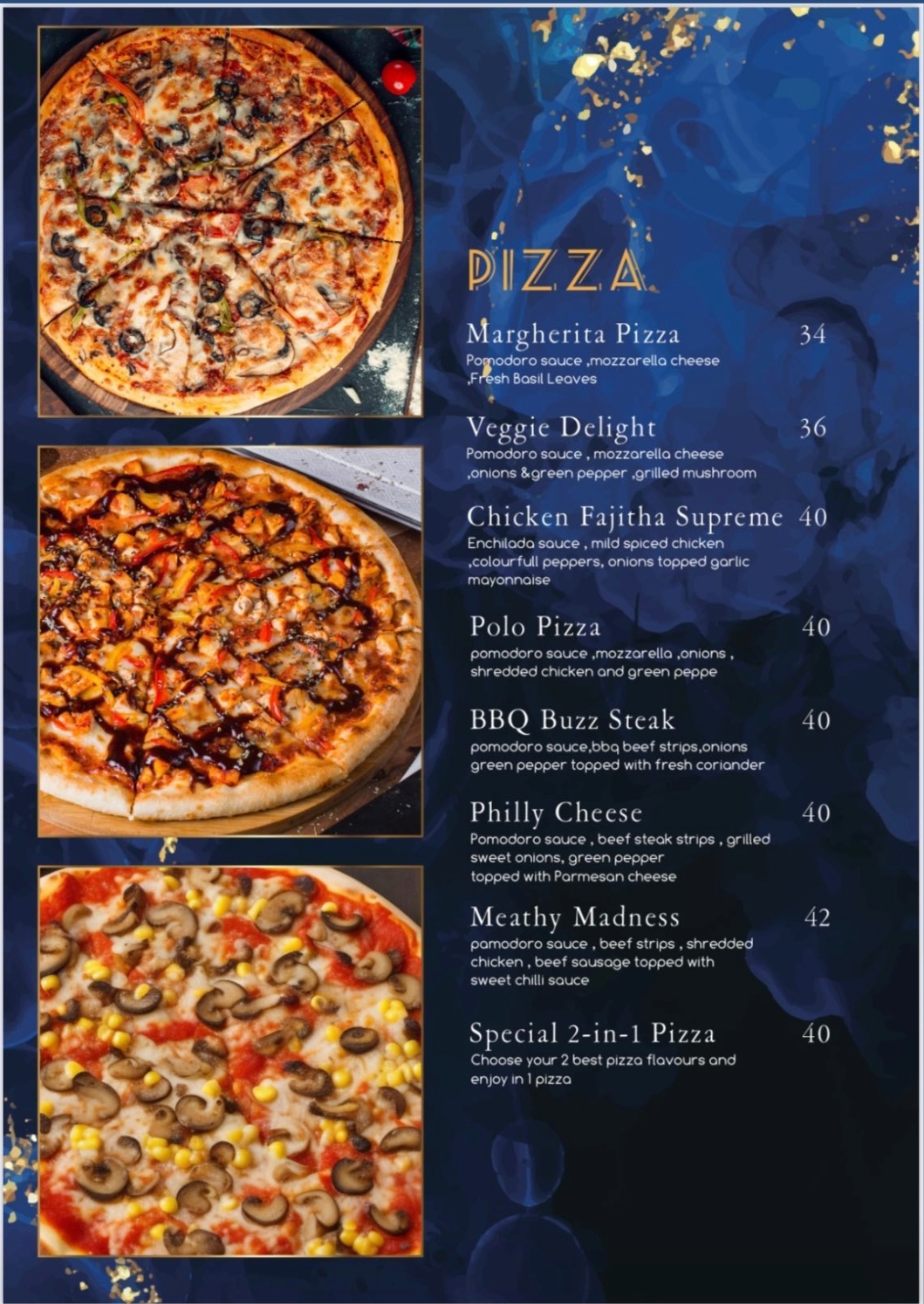
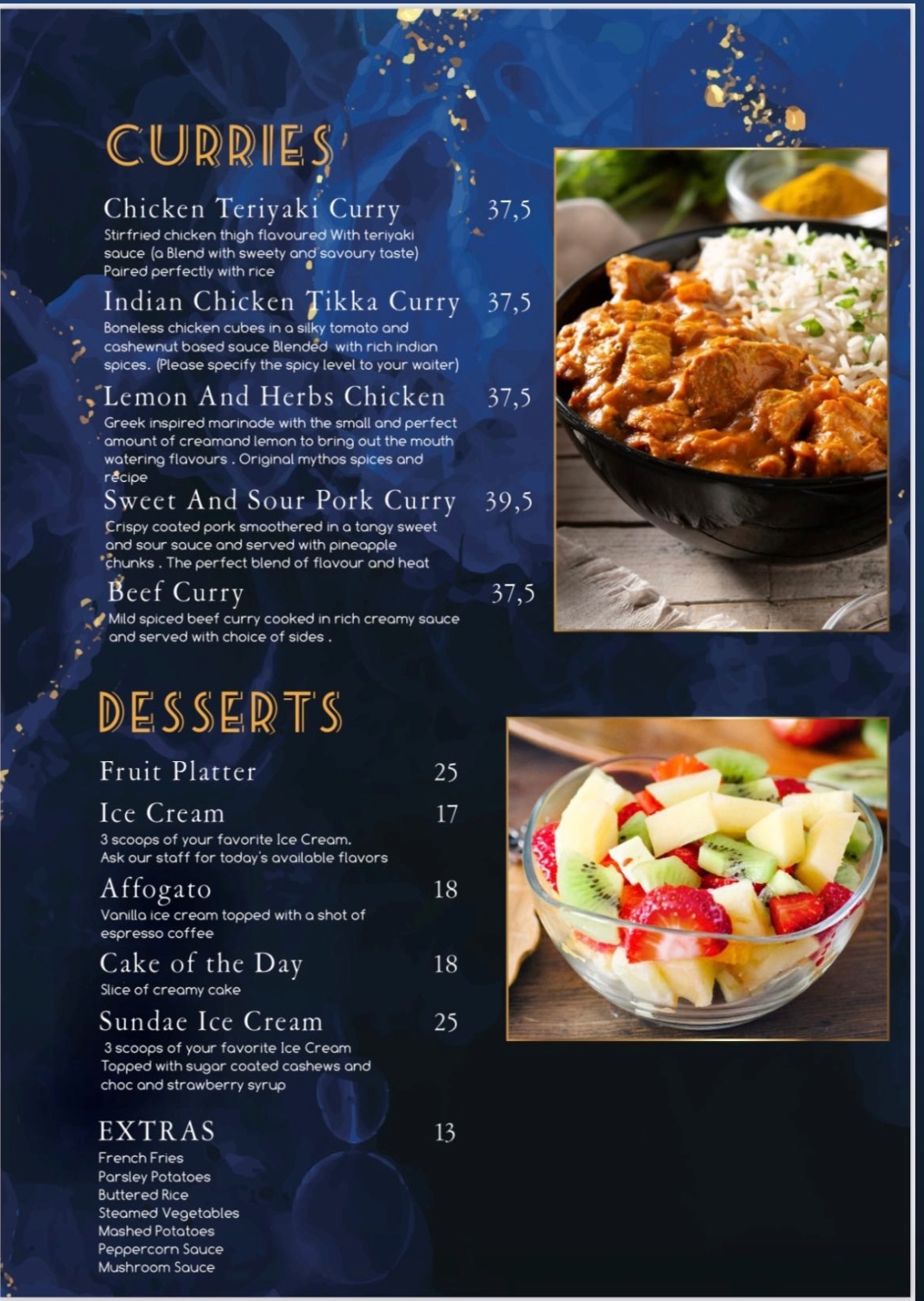
Zula Lusaniya Menu

Hallmark Cafe Dzorwulu Menu
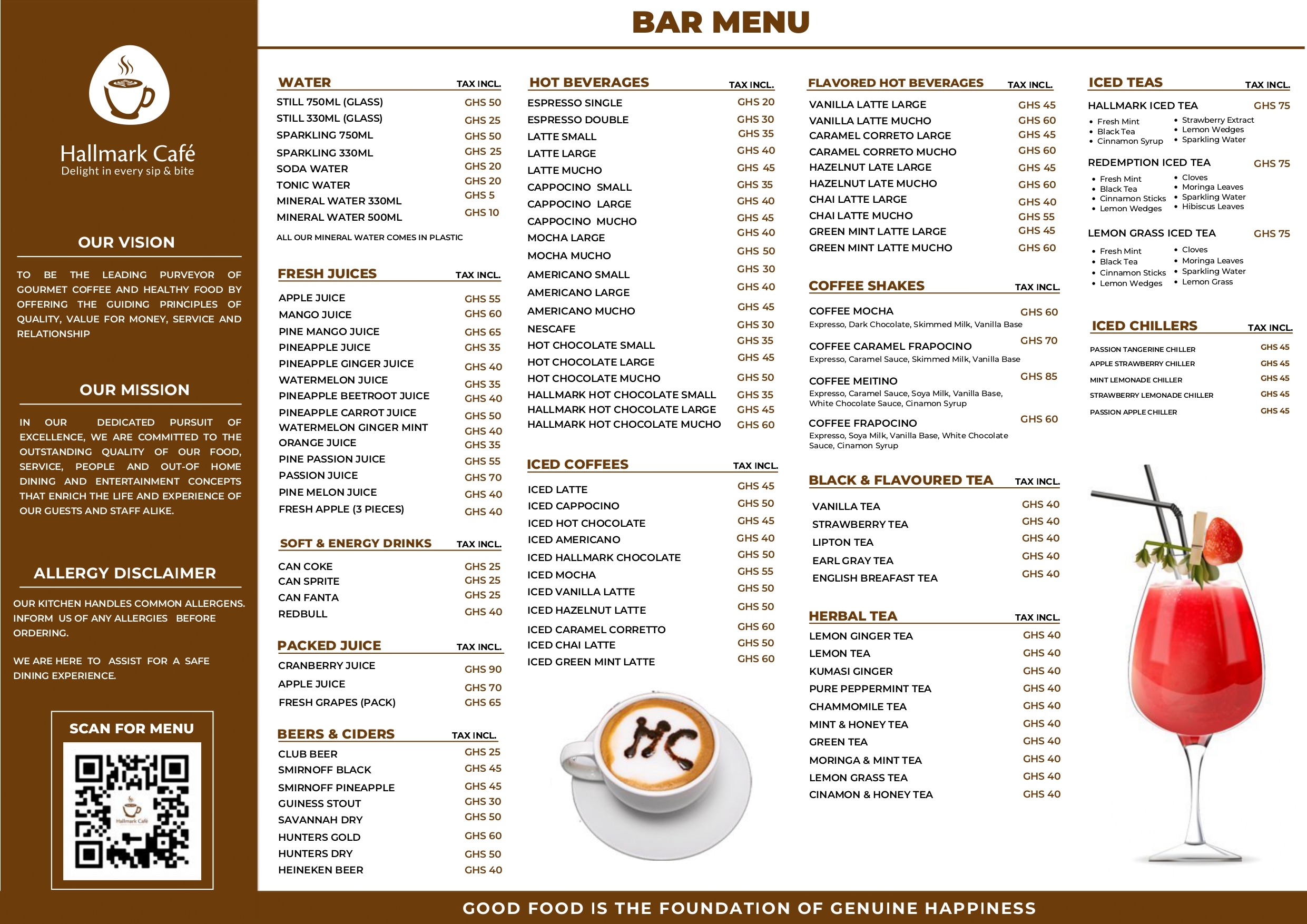
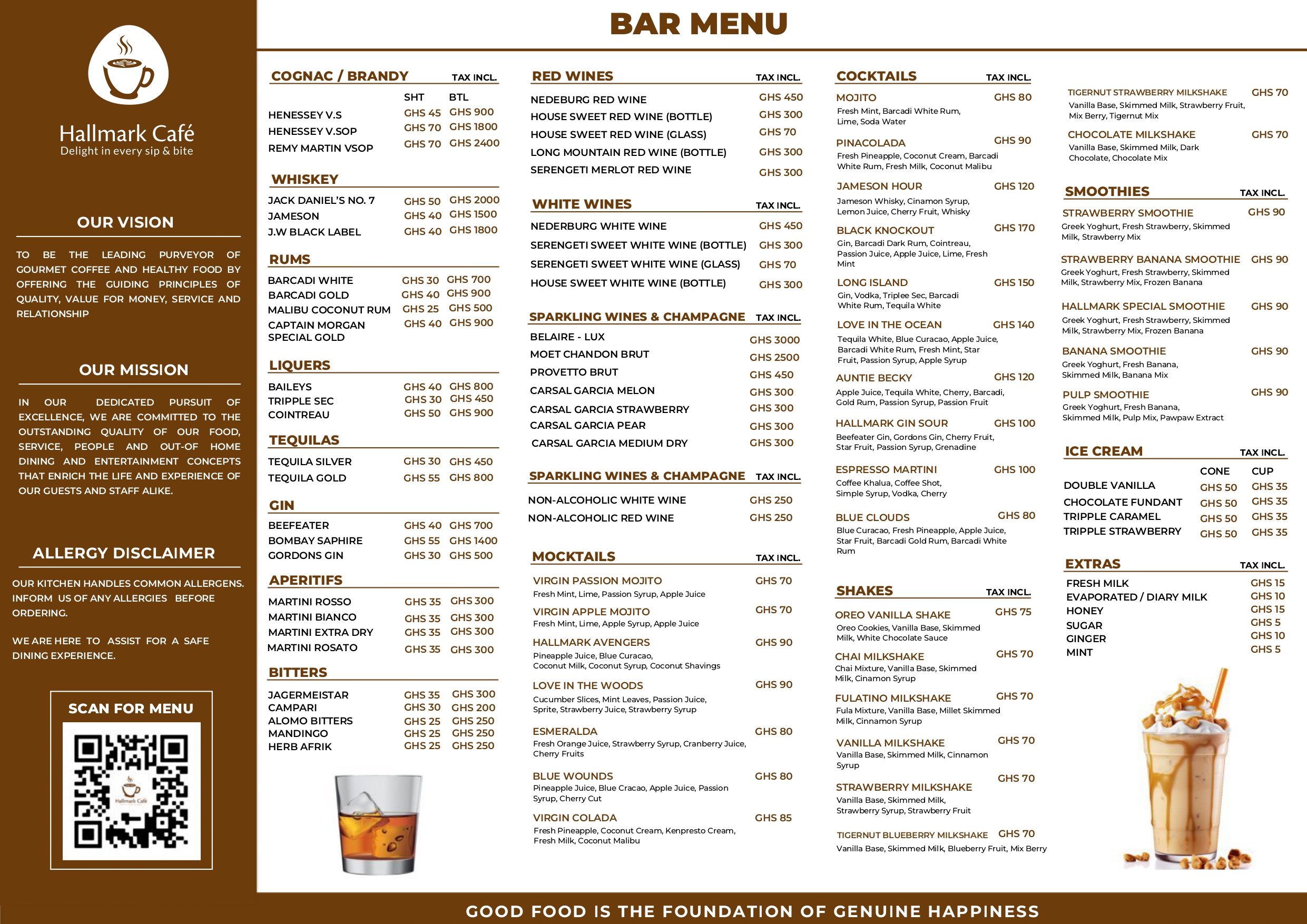

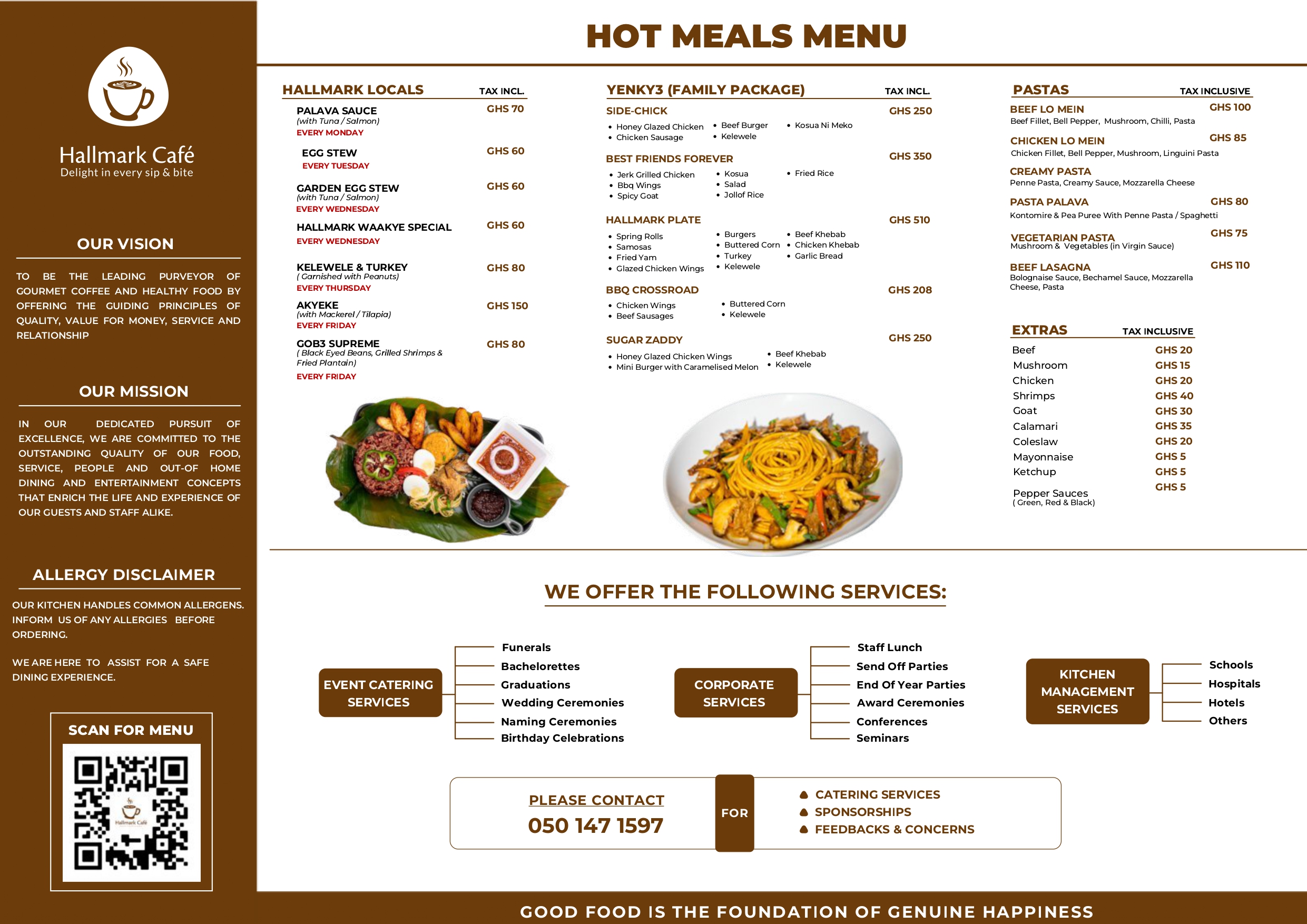
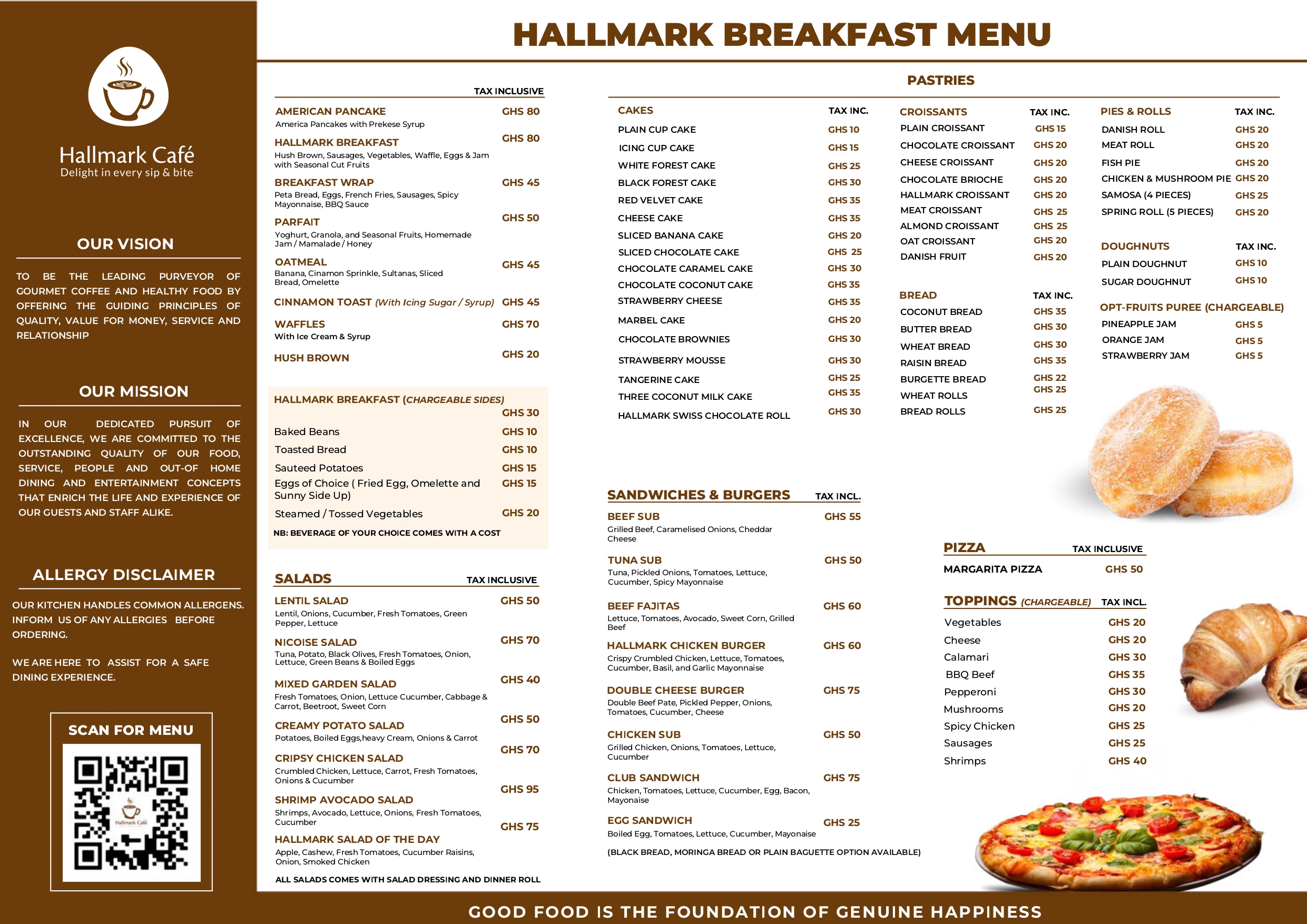
Shaka Zulu Foods Menu
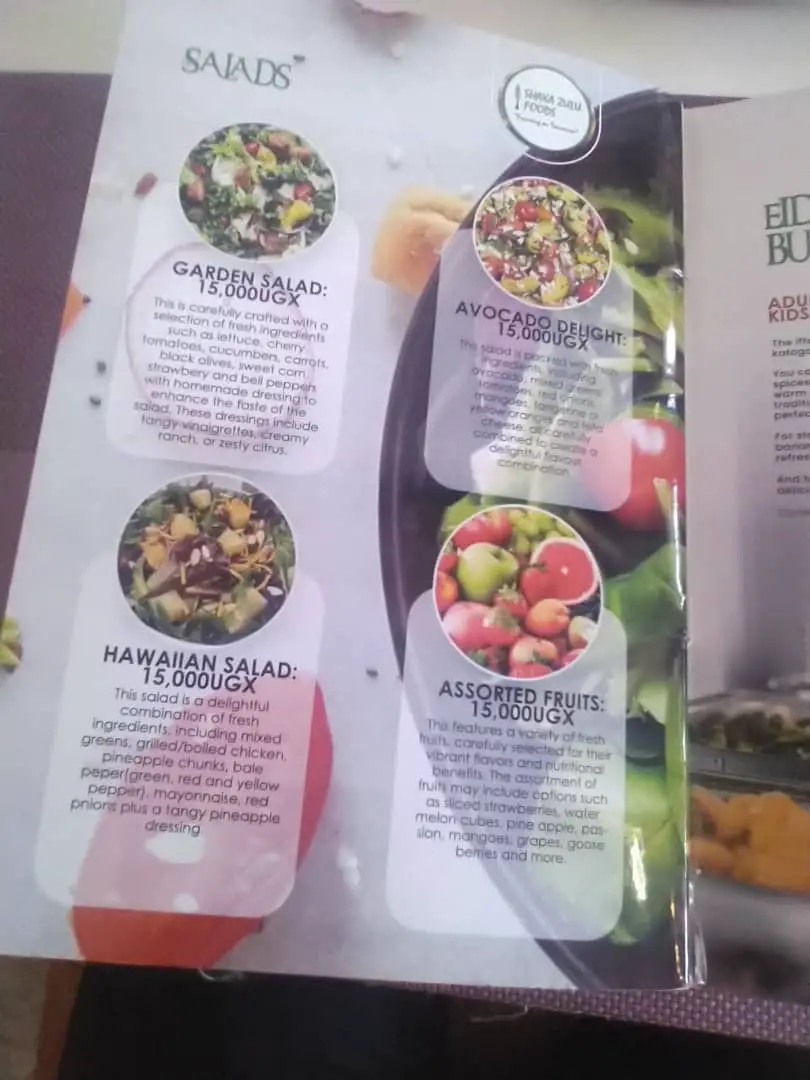


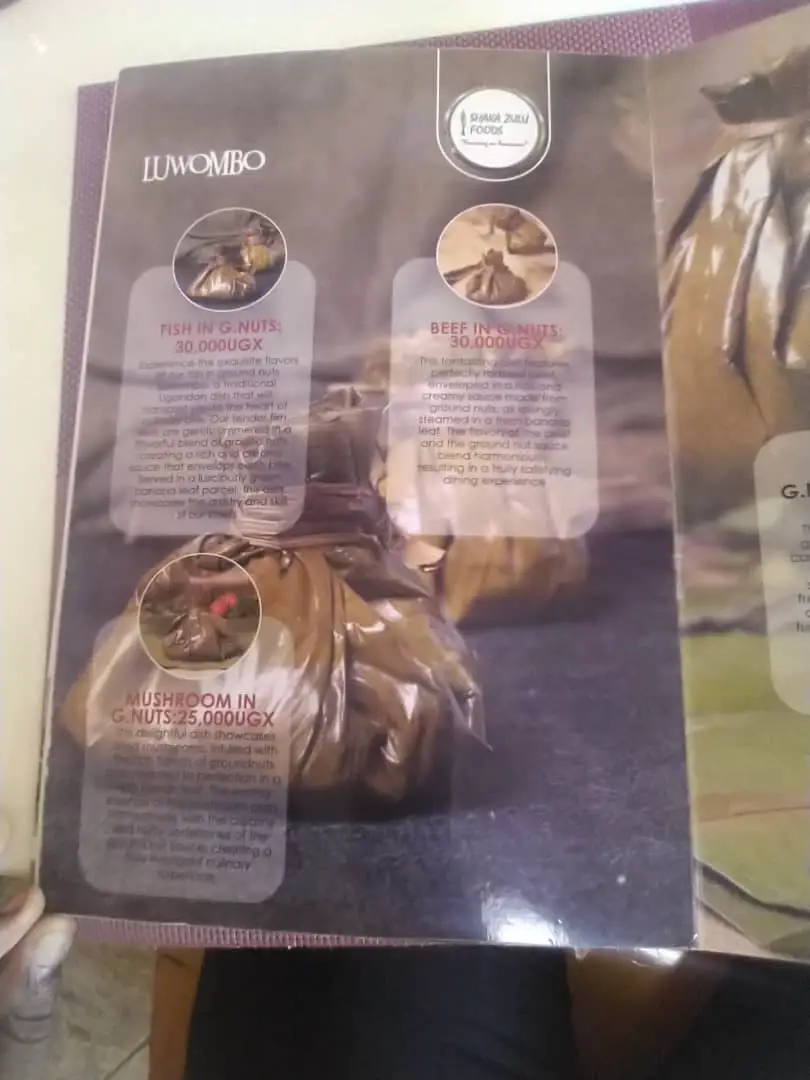
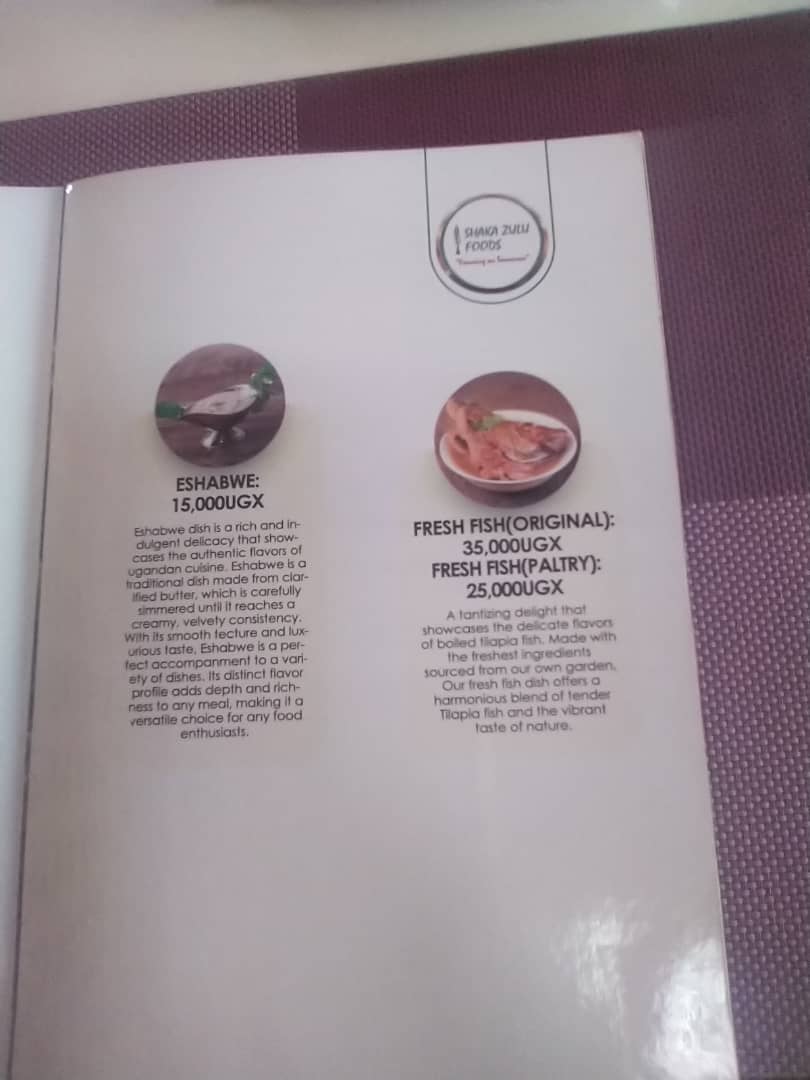
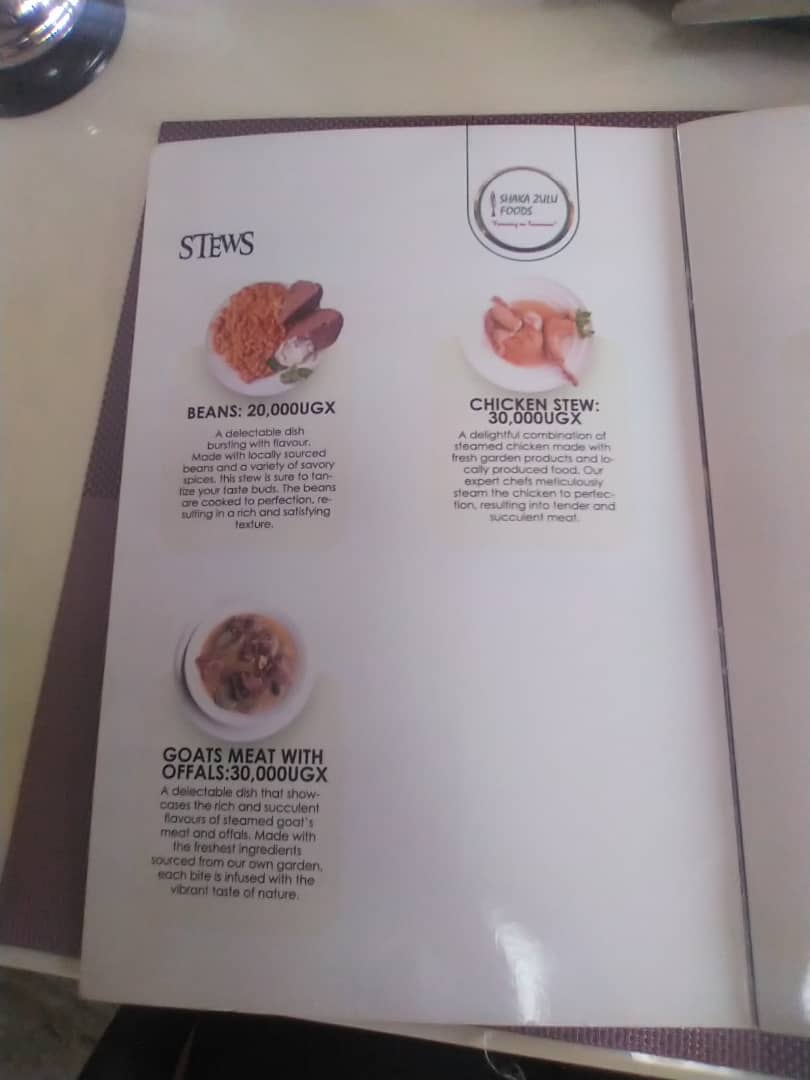
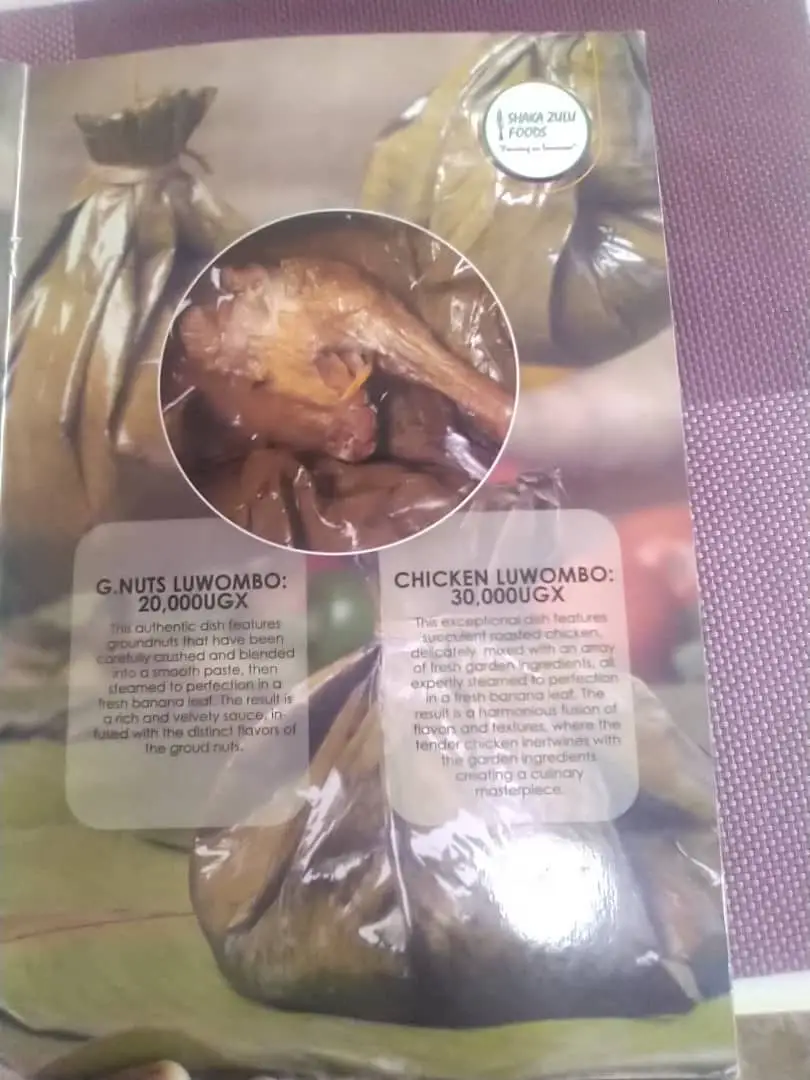
Sula Birungo Reviews
I haven’t been to Sula Birungo yet, so I can’t tell you more about it.
I will be sure to visit as soon as I am back in Kampala and do just that. Check back soon for what I have to say! 🙂
Saffron Foodies Menu/Saffron Commercial Market Menu/Saffron Menu Commercial Market












Kingdom Kampala Menu and Prices/Kingdom Kampala Restaurant Menu Price List/Noor Restaurant Kampala Menu















Kanu Menu
Kanu Breakfast Menu

Mingo Snacks Menú

Cultural Centres in East Africa: Igongo Cultural Centre Contacts
Igongo Cultural Centre
P. O. Box 512 Mbarara / P.O. Box 488 Kampala
Phone (Mbarara): +256-(0)392-722828 or +256-(0)392-722829
Phone (Kampala): +256-(0)414-258914
Restaurant reservations: +256-(0)776-722828
www.igongo.co.ug
Twelve kilometers from Mbarara along the Mbarara-Masaka Highway, in Biharwe, lies a cultural center that I have come to love: Igongo Cultural Centre!
Igongo Cultural Centre includes a restaurant, Kaahwa Kanuzire, a craft- and bookstore, Nkwanzi, and the reason I love it so much, the Eriijukiro Museum of South Western Uganda.
Historical Background of Igongo Cultural Centre

I first heard of Igongo Cultural Centre one December, when I arrived in Kiruhura for my annual end-of-year visit to my maternal family home (see Lake Mburo National Park (Entrance Fees & Review) for more details).
People were ablaze with talk of the new cultural center that would officially be opened at the end of the year by none other than his Excellency.
Those who had been there before told me of its beautiful grounds, good food and model traditional houses.
Curious about it, I decided I would check out Igongo Cultural Centre as soon as the holidays were over.
That’s how I found myself, early the folllowing January, at Igongo Cultural Centre for the first time.
As soon as I got on the premises, how big and well-organized the place looked struck me.
I don’t know what I was expecting, but it wasn’t anything close to what I saw.
Igongo Cultural Centre had huge, beautiful, manicured gardens and a set of signs clearly enumerating what lay on the premises.
I passed Kaahwa Kanuzire, the restaurant, without much more than a cursory glance.
I knew I would be having lunch there later and decided instead to make my way to the Nkwanzi shop before getting to what had really brought me to Igongo Cultural Centre: the Eriijukiro Museum.
Igongo Cultural Center Nkwanzi Crafts & Bookshop
Nkwanzi stocks books and crafts related to the culture and history of the region’s people.
The crafts were both interesting and pretty. What really captured my heart, though, were the books.
There I found–and I find each time I visit Igongo Cultural Centre–interesting books about aspects of local culture such as language, cows, herbal medicine and folklore to name but a few.
READ ALSO: 8 Popular Tanzania Fashion Designers & A Dar Fashion Event
I would find these books interesting if they were about any culture in the world. They are doubly interesting to me, though, because they are about my culture, which I unfortunately don’t know well because I didn’t grow up in it.
After browsing through the books and quickly looking at the crafts, I made my way to the museum.
READ ALSO: Chimamanda Ngozi Adichie (Half of a Yellow Sun Summary & Americanah)
Igongo Cultural Centre Museum
I enjoy visiting museums.
Whenever I am somewhere new, I look out for museums because they are a quick and usually inexpensive way to learn about a place, its people, its history and culture.
For this reason, I was looking forward to visiting the Eriijukiro Museum. I was looking particularly forward because this museum was about my culture, as presented by my people, rather than from the foreign perspective that is so common when talking about African cultures.
I paid the entry fee for East African nationals—a few thousand shillings—and was all set to begin my museum tour.
I have visited the Eriijukiro Museum a couple of times now. Each time, I am always happy at the welcome I receive.
As I pay to enter the museum, almost invariably, a well-dressed and professional guide in uniform meets me and my group at the front of the museum to welcome us inside and take us around.
This is not the norm at other museums across East Africa. Perhaps this has something to do with Eriijukiro Museum being privately owned.
In the same vein, I must say that I am impressed with how organized and well-documented the Eriijukiro Museum is.
Inside the Eriijukiro Museum
The displays are organized thematically around themes such as housing, fashion, games & leisure, education, folklore, religion, politics, etc., and each thematic section covers that particular aspect of culture or history, chronologically, for each of the different communities that inhabit southwestern Uganda, i.e., the Bakiga and the Banyankore, their subgroups and other smaller communities.
There’s so much to learn within the museum that I can’t attempt to share it all with you.
Rather, I’d like to tell you about the three things that I most enjoyed learning at the Eriijukiro Museum.
READ ALSO: Medication for the Flu
My Favorite Learnings From the Eriijukiro Museum and a Picture Taken Near Lake Kigere
- My favorite thing to learn was that, in the 18th century the Kingdom of Mpororo (where my matriliny stems from) was ruled by a warrior queen called Kitami kya Nyawera. I am always happy to learn about strong female figures in African history who challenge the stereotype of what a “good traditional African woman” is but even more so when it’s so close to home.
- My second favorite thing to learn had to do with the gigantic cow statue in front of the museum. When I first saw this statue, I simply thought that it had something to do with the general value placed on cows by the local people. Apparently, this statue is of a specific cow known as Mayenje ga Ishinjo who was the reason behind an 18th century war between the Kingdom of Buhweju and the Kingdom of Nkore—a war that lasted years and cost 4000 lives!!

- The third was learning more about the Bacweezi. I first heard of the Bacweezi in hushed conversations with my cousins when I was a teenager. Hushed because the Bacweezi are a legendary people thought to have had supernatural powers who are said to have inhabited the region before its present-day inhabitants. It’s not clear what ever became of the Bacweezi. Some say they all walked into a lake one day and disappeared. It was interesting to learn at the museum that they, historically, actually did exist. Archaeological records show that they inhabited the region as far back as the 12th-14th century.
Final Thoughts about the Eriijukiro Museum
Those are the things that stood out most for me. Still, there were many other things that I enjoyed learning there too.
I enjoyed learning about the local people’s ideals of beauty (more relevant to me and my body type than any I have ever encountered before), about the money used in the region from as far back as when money began to be used to the present day, and learning about the many varieties of banana plants grown in the region along with their various uses.
I have visited the museum with both locals and non-Ugandans. Both groups of people have found the museum very interesting.
If you’ve never been and happen to be around Mbarara, I greatly encourage you to pay the museum a visit.
Done with the museum, I made a quick stop at the Eitaramiro Cultural Village. This section of the centre features models of traditional housing from the region.
Then, it was time for lunch at Kaahwa Kanuzire.

Kaahwa Kanuzire (See Igongo Cultural Centre Menu Above)
Kaahwa Kanuzire has been called by some “the best restaurant in Mbarara and its vicinity”.
Although I cannot attest to this because I do not know Mbarara restaurants well enough, it is one of my preferred places to have a meal when I am around Mbarara.
What Is So Great about Kaahwa Kanuzire (See Igongo Cultural Centre Menu Above)?
The food as well as the service is always good, and the view of the manicured gardens is delightful!
What Kind of Food Can You Expect to Find on the Igongo Cultural Centre Menu?
I usually order typical Ugandan fare when I’m there, but they also serve international dishes.
So…if you have not visited Igongo Cultural Centre but will be in or around Mbarara some time soon, I encourage you to visit.
A trip to the museum is a wonderful way to learn about the culture and history of the region’s people. If museums are not your thing, then it’s also a wonderful place to just chillax and grab a bite.
Have you ever been to Igongo Cultural Centre? If so, what did you think?
As always, I’d love to hear what you have to say.
Until the next time,
Biche
IGO NGO
IGO and NGO are two acronyms both used to denote types of organizations.
IGO stands for inter-Governmental Organization while NGO stands for Non-Governmental Organization.
Kingdom Kampala Restaurants
Noor’s Restaurant is an Egyptian cuisine fast food restaurant located at Kingdom Kampala.
Mocha Cafe Kigali Menu






Bish Cultural Center
If you would like to find out more about Bish Cultural Centre, click here.
Photo Credits: fobetravels, Hangspots, Ssula Birungo Wandegeya Chicken

Interesting post, I heard of the Bachwezi from my mother. I’m always fascinated with African history, europeans have populated our minds with theirs making it more than exciting when we find pieces og ourselves.
Hi Rasberry_blush,
Welcome to ChickaboutTown. Although I know we interact a lot on Facebook and Twitter, I think this is the first time you’ve left a comment on my blog. Karibu sana!
What you say is absolutely true. It’s a shame, and it’s time we change that. One step at a time!
Biche
Nice experience. I agree with every word you have put together. I love the wealth of history in the museum. That Pyramid you see up on a hill – from a distance – is a story of another day!
Hi Titus,
Welcome to Chick About Town! I am glad you enjoyed reading what I had to say about Igongo. Every time I go there, I have a fantastic experience–it never gets old.
By Pyramid, do you mean the Eclipse monument? I was in Mbarara some months ago and thought I should stop and check it out (but was in a bit of a rush).
Did you visit it? What was it like?
Looking forward to hearing more from you,
Biche